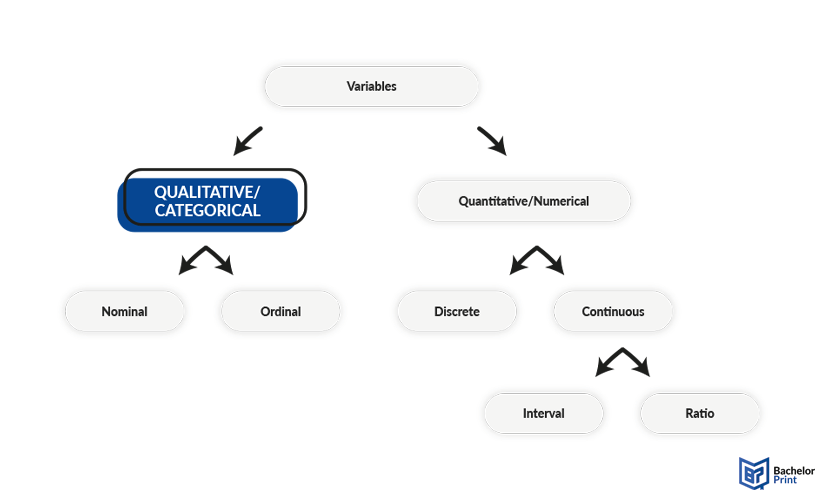
In methodology, you always have to focus on what you have and what you need to define your aim and goals. These things can easily be defined through different types of variables, for example categorical variables, on which the focus of this article is set on. Their value cannot be described in statistical numbers, as they only pose multiple choice or rankings, which is why it is especially important to know how to use them.
Definition: Categorical variables
Categorical variables, which are also called qualitative variables, only have a fixed number of possible outcomes and only include non-numeric values. Furthermore, they cannot be used for statistical calculations, as they are merely a choice out of options or a ranking of some sort. The opposite to them would be qualitative variables or numerical variables, whose value holds mathematical significance and whose numbers are absolute.

Nominal variable
A nominal variable is defined by the fact that there is a limited number of options to choose from, as well as that there is no ranking of these options. The simplest form is the binary variable, which only has two options to select from, but there is no limit to the number of options available.
Ordinal variables
Ordinal variables, on the other hand, follow a ranking. They also have a restricted number of options, but these are ranked. A very simple example are questionnaires with scales to choose your answers from.
Applications
Nominal variables include only logically separate categories, meaning that you can only choose one option. Therefore, this type of categorical variable is suited best for multiple choice questions in exams or evaluations about a certain status in a questionnaire, such as gender, marital status or employment.
Ordinal variables, on the other hand, are always ranked, meaning that the answer implies a certain judging. These qualitative variables find application in the assessment of satisfaction or wellbeing through a scale. Further potential categories are the classification of school grades, spice tolerance, or socioeconomic status. Especially since evaluations through ordinal values can be quite subjective, it is important to have a big enough sample size to ensure the validity of the survey.
Other types of variables
- categorical variables and qualitative variables
- quantitative variables and numerical variables
- nominal variables
- ordinal variables
- discrete variables
- continuous variables
- interval variables and ratio variables
- random variables
- latent variables
- composite variables
- binary variables
Printing Your Thesis With BachelorPrint
- High-quality bindings with customizable embossing
- 3D live preview to check your work before ordering
- Free express delivery
Configure your binding now!
FAQs
A categorical variable is characterized by a limited number of values to choose from. This can be either a multiple-choice question or a ranking of any sort.
Categorical variables only have a fixed set of options, which do not hold statistical value while quantitative variables, can be used in statistical calculations as they hold real, measurable value.
Examples of values of nominal variables can be marital status, which can be single, married, divorced or widowed.
An example for an ordinal variable could be customer satisfaction, very satisfied, satisfied, neutral, unsatisfied or very unsatisfied.